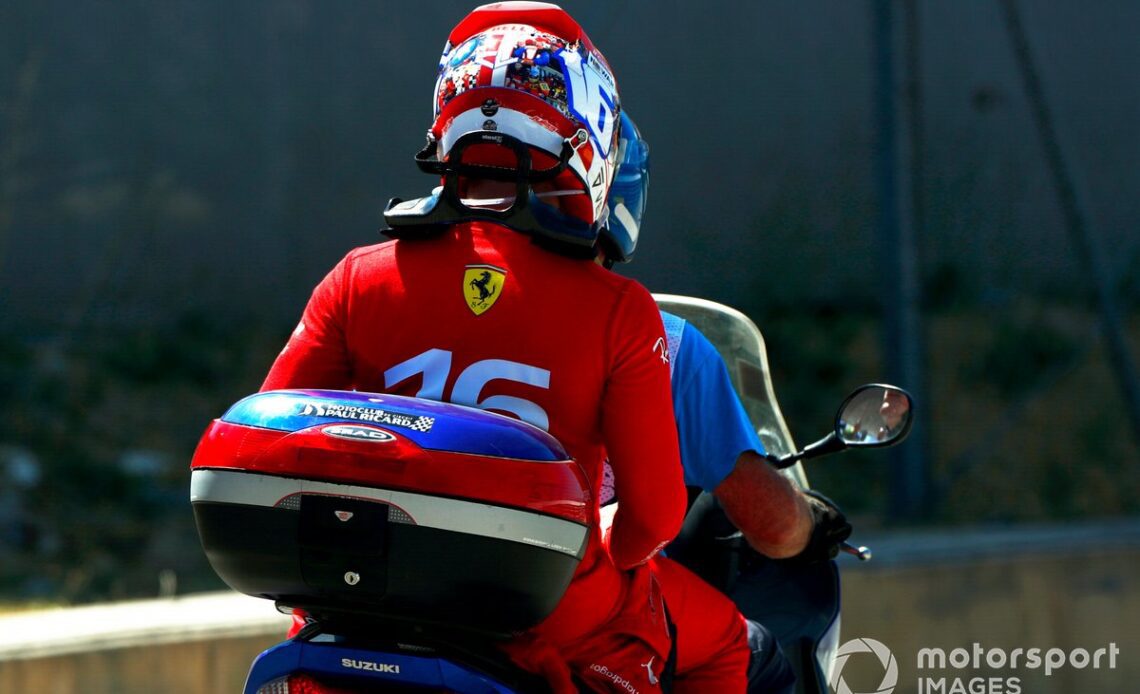The Monegasque driver had been in control of the race at Paul Ricard after holding off a challenge from title rival Max Verstappen in the opening stages.
But shortly after Verstappen elected to go for an early switch of tyres, it all went wrong for Leclerc on lap 18 as he spun off at Turn 11 – putting him out of the race.
Stuck in the barriers, he spoke to his team over the radio and was broadcast giving them the message: “I cannot go on throttle.”
His reference to the throttle, just a fortnight after he battled a sticking accelerator pedal in the closing stages of the Austrian GP, prompted wild theories that Leclerc had been put out by a repeat issue.
Although Leclerc owned up after the race that the crash had been his own mistake, the conspiracies were further fuelled when Red Bull technical director Pierre Wache was caught on camera after the Dutchman’s victory telling him he had heard over the radio it was a throttle problem.
But Ferrari team principal Mattia Binotto is clear that Leclerc’s radio comment was wholly related to his attempts to reverse out of the crash barrier, and had nothing to do with the cause of the accident itself.
“First there was no issue with the throttle itself, [it was] nothing to do with Austria,” he explained.
“What happened is a genuine mistake of Charles which are things that may happen, and I think they do not take off how good he is as a driver and as a fantastic driver. But it was a genuine mistake.
“What you heard on the radio was about when he was in reverse gear trying to get out from the barriers. There is a strategy, without going in to all the details, that [meant] he was on the throttle, but didn’t feel sufficient torque from the engine. It was nothing wrong. Simply the strategy there.”
Charles Leclerc, Ferrari, is given a ride back to the pits after crashing out from the lead
Photo by: Alastair Staley / Motorsport Images
Binotto explained that the cause of the throttle problems in Austria had been completely resolved after it was put down to a sticking component.
“Normally we’re not discussing much about details on what’s happening, but what happened in Austria is very simple,” he said.
“There was a damper which was slightly sticky. Not more than that. And we already put in place some actions to avoid it for the future.”
Click Here to Read the Full Original Article at Motorsport.com – Formula 1 – Stories…

